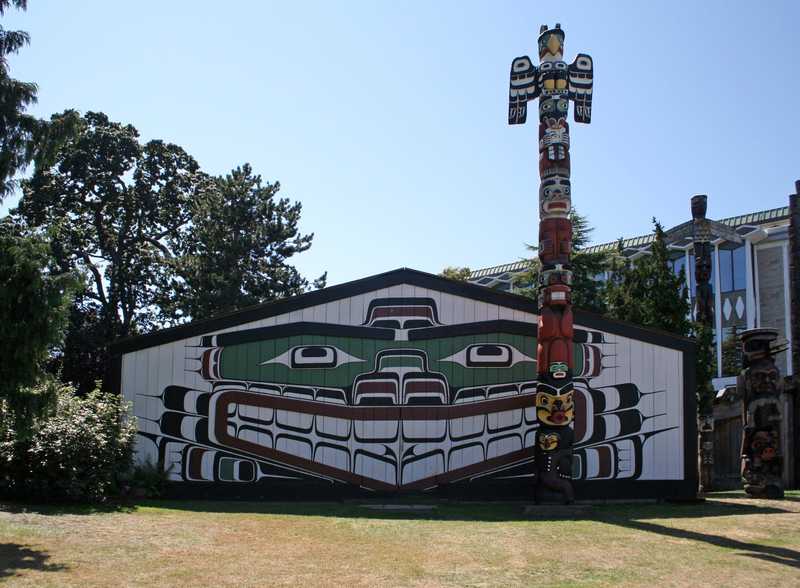British Columbia's recreational marijuana regulations were announced this week as the Senate debates the future of adult-use legislation in the country. Yet most of the 10 provinces and territories have yet to decide on what they’ll charge as provincial sales tax on cannabis.
What we do know is that both federal and provincial governments are in accord that First Nations people with proof of being a "status Indian" will be tax exempt when buying marijuana from a business located on reserve land.
Plus, First Nations-owned-and-operated stores on reserve land will be exempt from the Goods and Services Tax (GST) as well as the Harmonized Sales Tax (HST) on all cannabis products, just like other goods that are exempt from tax under the Indian Act.
What Is the Indian Act?
The Indian Act, which has existed since 1876, recognizes First Nations people’s Indian status and outlines their eligibility for tax exemptions. Initially, it conferred Indian status on male members of some bands, their children and their wives. Amendments eventually extended the status to those who may have lost it over the course of generations and children who have one status and one non-status parent.
The Indian Act comes with the Indian Health Policy that was developed in 1979.
How Tax Exemption Works for Status Indians
A status card is a government ID that identifies someone as a status Indian as defined by the Indian Act. It allows registered Indians access to benefits including some health-care coverage and money for secondary education.
As with many products, when status Indians purchase them on a reserve, they also often don’t pay GST or HST. If they buy something off-reserve but have it delivered to the reserve, the GST and HST exemption still applies.
Federal & Provincial Governments to Honour Indian Act Tax Exemption for Cannabis
The Indian Act tax exemption will be honoured for all cannabis products. But First Nations-owned retailers won’t be exempt from excise duties—the charges applied to all alcohol and tobacco products at the point of packaging; they affect all wholesale buyers regardless of their background.
The exemption applies to card-carrying Indian status customers buying cannabis from a business on reserve land; only they will get the tax break—and not many people qualify.
Fewer Than Half of Aboriginal Canadians Are Tax Exempt
The misconception in Canada that aboriginal people don't pay taxes continues to be circulated and accepted. The truth is that the exemption applies to less than half of First Nations Canadians.
In 2014, about 800,000 Canadians were status Indians, less than half of whom live on reserve land, according to Statistics Canada. Most exemptions on income, sales and property tax apply only to status Indians residing and/or working on reserves.
And then there are "Indians" in Canada who don't qualify for a status card. The Inuit and Métis don’t have status cards because they aren’t "Indian" as defined by the Indian Act, although they’re still indigenous to the country.
In the case of cannabis, it takes a status card, plus a First Nations-owned-and-operated business on reserve land to equal tax-free marijuana. Status Indians living on remote reserves may be allowed to get the GST and HST exemption for goods they bring back to the reserve, but there’s no word on whether that rule can extend to cannabis.
Can First Nations Canadians Turn to Medical Marijuana?
Each year, health-care coverage gets more and more limited as to what Aboriginal Affairs will cover for prescription medicines, dental care, eye care and medical devices.
The Non-Insured Health Benefits (NIHB) Program for First Nations and Inuit is offered to a First Nations person registered under the Indian Act and Inuk persons (as recognized by an Inuit land claim organization).
The Drug Benefit List is the master list indicating which drug products are eligible for benefits under the Non-Insured Health Benefits (NIHB) Program. The list is updated each quarter year with new drugs that qualify for coverage. The one thing that all of these medications have in common is a Drug Identification Number, something that medicinal marijuana doesn’t have.
Medical Marijuana Lacks a DIN, Holding First Nations Back From Free Access
Without a DIN, medicinal cannabis falls into a category of exclusions characterized as "drug therapies for particular conditions which fall outside the NIHB mandate and are not covered as benefits under the NIHB Program." The list includes household products, cosmetics and "alternative medicines," such as glucosamine and evening primrose oil.
RELATED: CANADA’S FIRST NATIONS WANT INPUT IN LEGAL CANNABIS
All new medicines must pass through a rigorous, expensive approval process to receive a DIN but no one has put up the money to make this happen for cannabis. Some experts believe that it's a matter of lobbying and that Health Canada should recognize that marijuana is unlike other narcotics. It's been used for a long enough time that it shouldn't have to go through the same trials as other drugs.
No DIN means that Canadian health insurers cannot add cannabis to their drug benefit plans; the federal government isn’t adding it to the health benefits for non-insured citizens.
By not insuring medical cannabis, the Canadian government risks alienating those who can't afford to get it through licensed producers. And this could lead to an at-risk population—addictions and mental illness being prevalent in First Nations communities—seeking alternative options through illegal avenues with unstandardized and untested products.
Photo credit: Tony Hisgett
